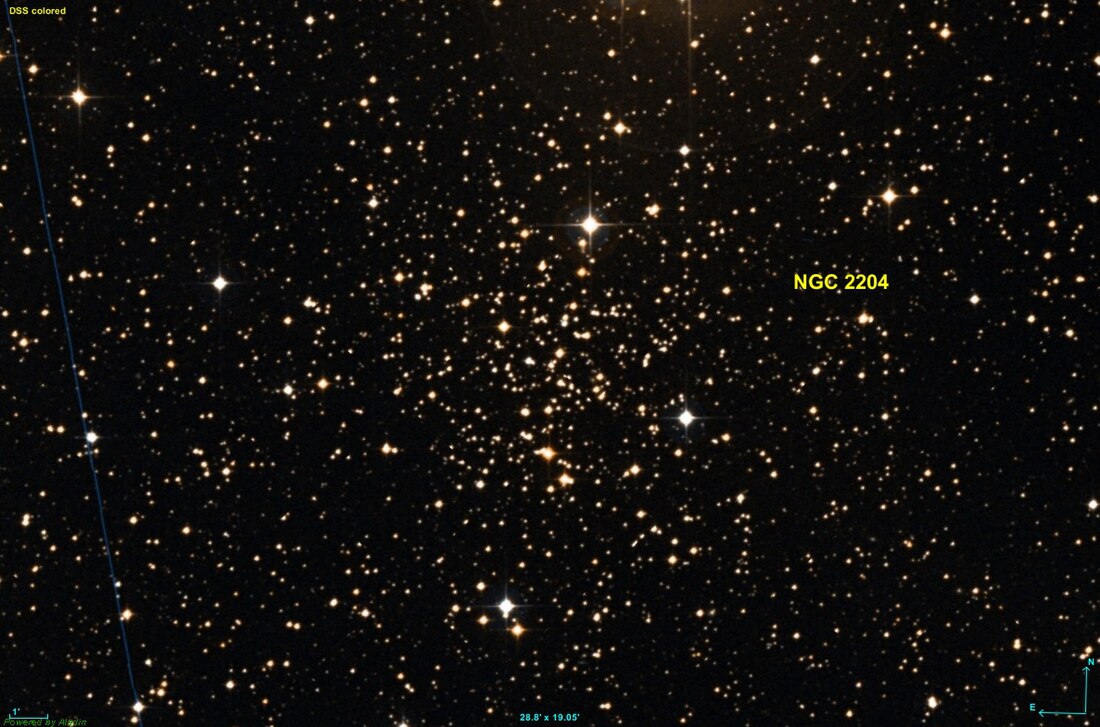Top Qs
Timeline
Chat
Perspective
NGC 2204
Open cluster in the constellation Canis Major From Wikipedia, the free encyclopedia
Remove ads
NGC 2204 is an open cluster of stars in the Canis Major constellation. It was discovered by the German-English astronomer William Herschel on 6 February 1785.[5] The cluster has an integrated visual magnitude of 8.6 and spans a diameter of 10.0′. Resolving the individual member stars is a challenge with a 10 to 12-inch amateur telescope.[3] It is located at a distance of approximately 13,400 light years from the Sun.[2] The cluster shows a mean radial velocity of +91.38±0.30 km/s relative to the Sun,[6] and is orbiting the inner galactic disk region about 1 kpc below the galactic plane.[2]
This is a rich but diffuse cluster with a Trumpler class of III 3m,[7][8] spanning a physical diameter of about 55 ly (17 pc).[9] It is an older cluster with an estimated age of 2.0±0.3 billion years.[10] The metallicity is correspondingly poor,[11][8] showing an abundance of iron about 59% of that in the Sun.[2] There is a prominent giant branch clump on the HR diagram.[7] The cluster has a significant population of blue stragglers,[12][11] an indicator of past stellar mergers. It has a pair of candidate chemically peculiar stars,[8] and five variable stars have been discovered, including four eclipsing variables.[9]
Remove ads
References
External links
Wikiwand - on
Seamless Wikipedia browsing. On steroids.
Remove ads

